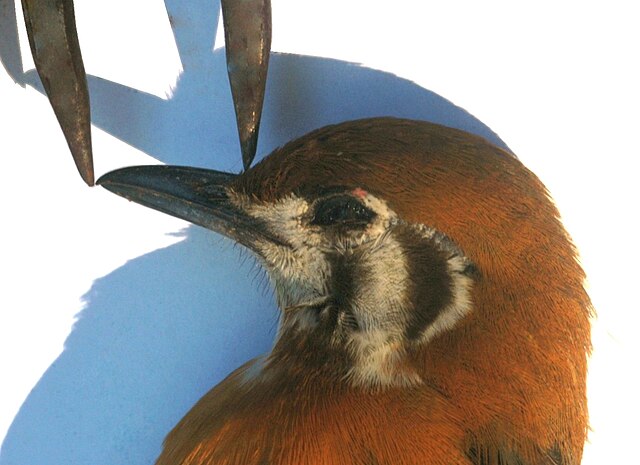The darters, anhingas, or snakebirds are mainly tropical waterbirds in the family Anhingidae, which contains a single genus, Anhinga. There are four living species, three of which are very common and widespread while the fourth is rarer and classified as near-threatened by the IUCN. The term snakebird is usually used without any additions to signify whichever of the completely allopatric species occurs in any one region. It refers to their long thin neck, which has a snake-like appearance when they swim with their bodies submerged, or when mated pairs twist it during their bonding displays. "Darter" is used with a geographical term when referring to particular species. It alludes to their manner of procuring food, as they impale fishes with their thin, pointed beak. The American darter is more commonly known as the anhinga. It is sometimes called "water turkey" in the southern United States; though the anhinga is quite unrelated to the wild turkey, they are both large, blackish birds with long tails that are sometimes hunted for food.

Darter
Female anhinga (A. anhinga) taking off
Australasian darter drying its wings
Female Australasian darter, Anhinga novaehollandiae, drying its wings
The beak, bill, or rostrum is an external anatomical structure found mostly in birds, but also in turtles, non-avian dinosaurs and a few mammals. A beak is used for pecking, grasping, and holding, preening, courtship, and feeding young. The terms beak and rostrum are also used to refer to a similar mouth part in some ornithischians, pterosaurs, cetaceans, dicynodonts, anuran tadpoles, monotremes, sirens, pufferfish, billfishes and cephalopods.
The bony core of the beak is a lightweight framework, like that seen on this barn owl's skull.
A gull's upper mandible can flex upwards because it is supported by small bones which can move slightly backwards and forwards.
The sawtooth serrations on a common merganser's bill help it to hold tight to its fish prey.
A bird's culmen is measured in a straight line from the tip of the beak to a set point — here, where the feathering starts on the bird's forehead.








